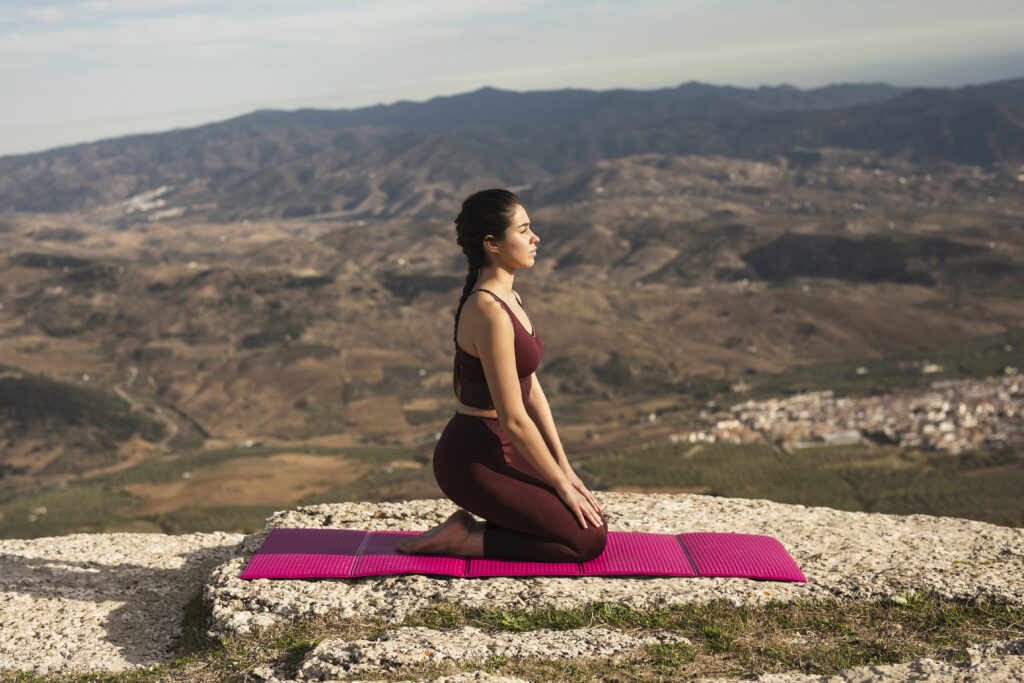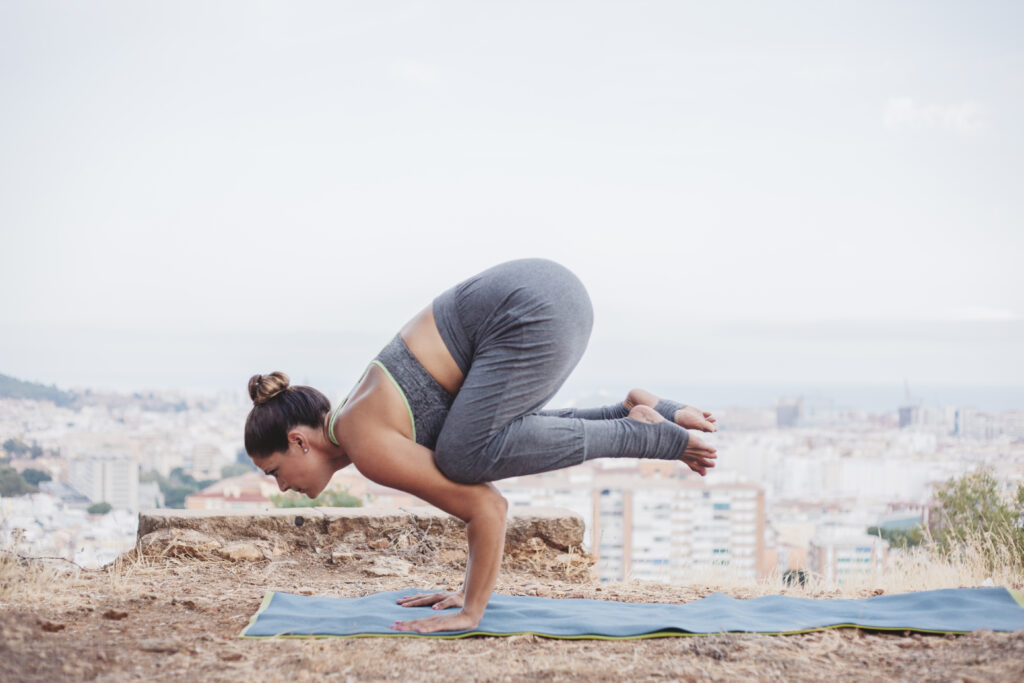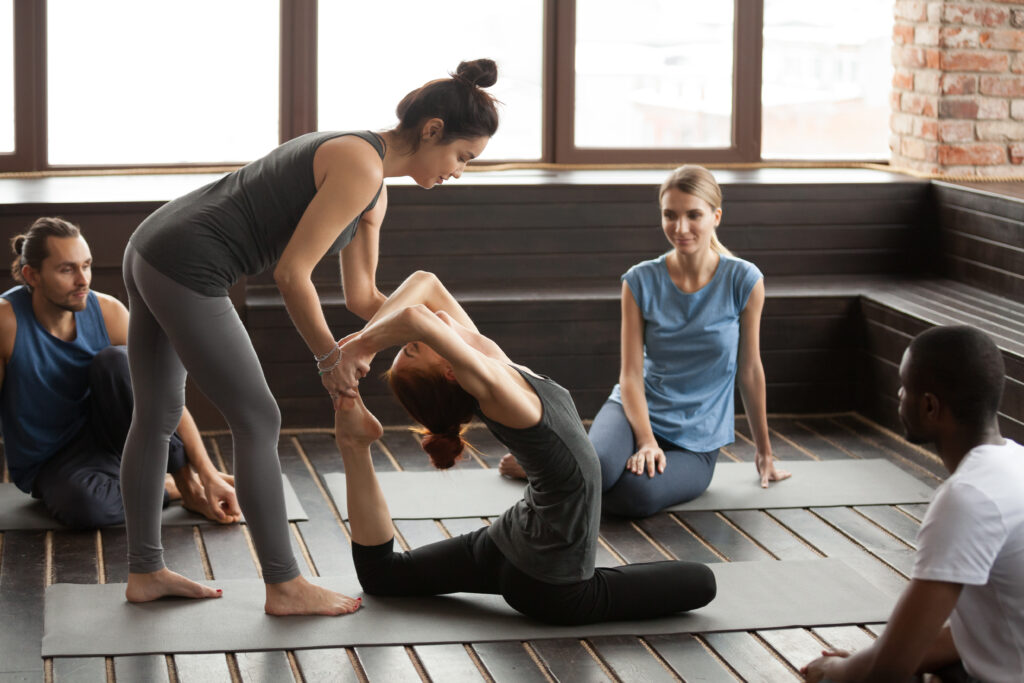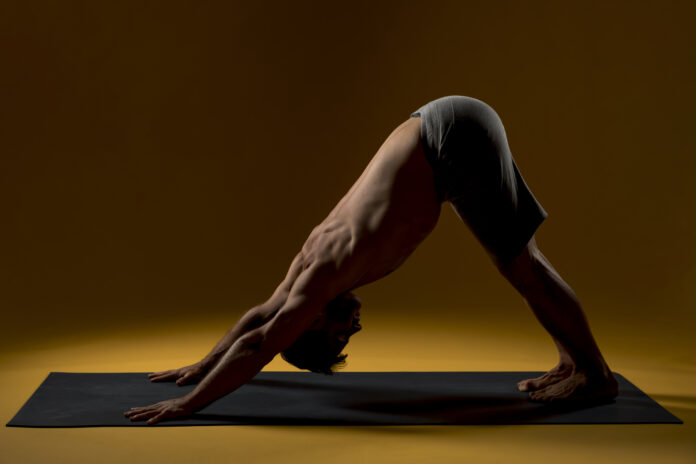Yoga isn’t only one style. This mind-body exercise has many varieties and is popular due to its specific discipline, focus, and goals. Power yoga is a type of yoga that improves muscle strength and cardiovascular endurance. It has challenging poses that need to move from one to the next pose quickly. It provides a variety of physical workouts while other styles of yoga follow the same series of poses each time. This article will help you to have a deep look at the benefits, possible drawbacks, and starting strategies of Power Yoga.
Overview of Traditional Yoga
 A traditional form of exercise, called yoga is practiced across the world to enhance physical flexibility, external stability, and mental calmness. Generally, people practice yoga in the morning to give a kick start to their day. You can also adopt this practice to make yourself fresh and rejuvenated. ‘asanas’ are the different postures of yoga and to practice these postures correctly You need to be firm and hold the postures right along with proper breathing to get the best results. There are many differences between traditional yoga and power yoga.
A traditional form of exercise, called yoga is practiced across the world to enhance physical flexibility, external stability, and mental calmness. Generally, people practice yoga in the morning to give a kick start to their day. You can also adopt this practice to make yourself fresh and rejuvenated. ‘asanas’ are the different postures of yoga and to practice these postures correctly You need to be firm and hold the postures right along with proper breathing to get the best results. There are many differences between traditional yoga and power yoga.
Overview of Power Yoga
The most significant difference between traditional and this new type of yoga is the speed of practice, the point of focus, mental stability, and body positioning. You can easily understand the main features of power yoga as its name itself clears its purpose. While practicing power yoga you have to focus on building strength and endurance that may help you burn extra calories. Power yoga isn’t an official type of yoga, and often people take it as Vinyasa Yoga which is the term used interchangeably with POWER YOGA. Thus you can say that this yoga is a form of Vinyasa, which has its origin in Ashtanga yoga. It was a type of yoga that started in the 20th century.
As discussed earlier, this yoga is more concerned about the flow from one pose to the next with fast speed rather than approaching each pose separately. The poses in power yoga are closely connected, unlike some other forms of yoga.
Definition of Power Yoga
Name doesn’t matter, power yoga is an intense activity at a fast pace in which your body needs to move from one posture to another rapidly, connecting your breathing to the different movements of your body. According to a Physiotherapist, a power yoga class doesn’t have a relaxed and mindful yoga practice but it may seem more like an aerobics class. This type of yoga is a dynamic rather than meditative form of yoga that requires mindfulness and focus on your breathing,
According to a Physiotherapist, a power yoga class doesn’t have a relaxed and mindful yoga practice but it may seem more like an aerobics class. This type of yoga is a dynamic rather than meditative form of yoga that requires mindfulness and focus on your breathing,
Differences in Practice and Focus
Speed, sequence, and flow are the major differences between traditional yoga and this yoga. Let’s have a deep look to understand these differences.
Speed of Practice
One of the major differences between traditional yoga and this yoga is the speed of practice. While practicing traditional yoga, you move slowly and practice different postures with precaution because maintaining a steady flow and a structured rhythm is the basic purpose of traditional yoga.
Power yoga, on the other hand, has a faster speed than regular yoga. It is a combination of an organized and steady flow of uninterrupted exercises. You perform it with a faster speed to improve your physical fitness. Unlike other regular yoga forms, the most common form of yoga practiced in the United States is this type and it is done at a much faster pace.
Traditional yoga consists of different poses and breathing at a slower rate and has a more deliberate pace than power yoga. The slower speed of traditional forms of yoga doesn’t give cardiovascular benefits as the strength yoga provides a pint of focus.
In the traditional, you must adhere to the specificity of your position because it is slower and may be easily surprised while in the case of Vinyasa yoga the motions you make are quick and fast-paced which makes it difficult to supervise them. In Vinyasa yoga you may lose the focus on the specific position and this element proves that power yoga doesn’t focus on positions but its priority is the movements of the body. Some other forms of traditional yoga like Ashtanga yoga also have similar postures as in power yoga but their order is different. In Ashtanga yoga, you practice each pose in the same order no matter who is the leading posture of the class. Vinyasa yoga classes have a specific sequence that is instructed by the instructor in the class. This makes it possible to move your body with more variability and less structure.
Flow of Power Yoga
One of the main differences between Vinyasa yoga and traditional yoga is the flow. Power yoga focuses on the flow from one pose to the next, while in traditional yoga you may be less focused on the flow of poses and have a main objective to achieve the right posture with each pose.
Mental Stability in Yoga and Power Yoga
Discipline is the most required quality for practicing traditional yoga, no matter what type of it. So before performing yoga, you must be disciplined. This is to make your movements slower to maintain a rhythm in your postures. This highly involved yoga practice improves your mental stability. Power yoga, on the other hand, requires your concentration on your actions and rapid movements that make you fitter. Vinyasa yoga doesn’t aim at mental aspects and is not useful for mental calmness.
General Stability of Yoga and Power Yoga
The general stability of the body is another difference between the both. Practicing traditional yoga offers an external balance of the body that may help to establish the internal balance. Internal stability is essential for the fitness of internal organs while external stability improves the external toning of your body. Vinyasa yoga does not link with internal or external stability, it just enhances the cardiac output. Performing power yoga circulates blood constantly in your body and ensures that it will reach all the organs.
Participation in Yoga and Power Yoga
Traditional forms of yoga can be performed by yourself. You can practice it without any hesitation even in having any medical condition. It means it is not harmful. Whereas, power yoga cannot be performed without supervision because it is a complicated physical exercise.
Goals and Benefits of Power Yoga
Both yoga and power yoga have prominent advantages. For instance, Practicing yoga enhances the freshness of your body and mind. Vinyasa yoga, alternatively, tells you about the condition and fitness of your body. However, according to a survey, the majority of people in Western countries like to perform Vinyasa yoga as it helps them to tone the body and gives strength to the muscular parts. This feature makes the body more young and attractive.
As you all live a busy and stressful life. It is difficult for you to add physical activities to your daily routine and this dull or sedentary lifestyle often makes you sick. Hence, it is a good idea to practice yoga to boost your body’s energy and to freshen your body parts. In this regard, scientific evidence also supports performing Vinyasa yoga as it provides a vast range of mental as well as physical advantages. Let’s have a look at the key advantages of Vinyasa yoga.
Power yoga is well known for its benefits regarding cardiovascular health as it includes resistance training and a fast pace that are beneficial for sustaining your heart rate. Vinyasa yoga workouts are a good source of getting your heart muscles strengthened and endurance. These workouts raise your heart rate to improve your blood circulation. This may increase the flow of oxygen to your body organs, especially for muscles. This cycle eventually proves good for stamina, fitness, and overall health. In addition, regular practice of Vinyasa yoga has benefits including:
- Strengthening your muscles, especially your heart and lungs.
- Controlling your blood pressure.
- Helping to control your blood sugar level.
- Enhancing the strength of your bones.
- Helping to lose weight.
- Improving your sleep quality.
- Enhancing your brain function.
- Limiting the risk factors for chronic diseases.
- Boosting your energy expenditure.
Enhancing Strength
Often people take it wrong and think that they can’t hold any pose for a length of time while performing Vinyasa yoga because it is fast-paced. But it is not true because along with fast speed, you may hold some poses for a minute or two. Holding your body to a specific posture for a few seconds will fire up your specific body muscles and work hard to continue the posture. This practice boosts your endurance and makes your body parts strong and flexible.
Motor Control
A study done in 2016, in a research center in the USA, revealed that people with Parkinson’s disease have many advantages regarding their tremors and muscle strength. Those people attend twice weekly Vinyasa yoga classes and get improved strength and sustainability of body and mind.
Weight Loss Vinyasa yoga has been proven the best source to burn calories. Burning calories Improves your muscle tone and strengthens your body muscles. So, without any exercise, just by experiencing Vinyasa yoga you may get a great weight loss. According to a survey report, power yoga makes you more connected to your body parts. This helps you to know about your body requirements. For example, it enables you to be more aware of when to stop eating, which is helpful for your weight loss journey.
Vinyasa yoga has been proven the best source to burn calories. Burning calories Improves your muscle tone and strengthens your body muscles. So, without any exercise, just by experiencing Vinyasa yoga you may get a great weight loss. According to a survey report, power yoga makes you more connected to your body parts. This helps you to know about your body requirements. For example, it enables you to be more aware of when to stop eating, which is helpful for your weight loss journey.
Moreover, yoga practice reduces back and joint pain, which may make you more active.
Stress Reduction
Yoga is a valid source to reduce stress and anxiety. It promotes feelings of relaxation and peace. As you know power yoga is less meditative and more fast-paced but still studies support the idea that power yoga can decrease levels of cortisol, the stress hormone, in your body. Even one session of Vinyasa yoga may provide you with a significant increase in stress-releasing hormones that work for stress reduction.
Overall Health
Power yoga has close links with your overall health conditions such as;
Maintaining good sleep and strong immunity. It also helps you to improve your balance of body. In Addition, Vinyasa yoga is found helpful for smokers to quit smoking. A survey report about the participants of the power yoga class clarifies that twice-weekly yoga sessions bring great change in the mood of participants and they feel relaxed after joining the class. They feel improvements in their mood swings and have fewer anxiety attacks.
Drawbacks of Power Yoga
Power yoga requires a certain level of strength, fitness, and speed therefore, a basic understanding of standard power yoga movements and poses is essential before indulging in it. Without getting accurate knowledge about the required attributes of it, you may get yourself in some trouble. As with any workout routine, you cannot add power yoga; it may strain your muscles and joints. If you have no exact knowledge about Vinyasa yoga poses, you may risk injury due to inexperience and lack of knowledge.
Duration of classes for Power yoga 60 to 90 minutes randomly. The time commitment may be a drawback, especially if you’re not performing any workout for the prescribed length of time.
Starting Strategies
You can join a fitness class or yoga session at my yoga studio to practice Vinyasa yoga. But you need to look for introductory classes as a beginner and ask your friends to recommend your suggestion before starting power yoga. It may be difficult for you to find Power Yoga Classes because these classes are named Vinyasa Yoga Classes so you have to look for the Vinyasa yoga sessions. Try to learn more about power yoga classes from your instructor before starting it. You must know about the expertise or fitness required for power yoga classes. But if you want to practice power yoga on your own at home, you may watch online videos and follow along. You must try out a yoga app that you may download on your mobile phone. In case you have a chronic condition such as heart disease or arthritis, or you are pregnant, consult with your doctor about whether power yoga is safe for you or not.
But if you want to practice power yoga on your own at home, you may watch online videos and follow along. You must try out a yoga app that you may download on your mobile phone. In case you have a chronic condition such as heart disease or arthritis, or you are pregnant, consult with your doctor about whether power yoga is safe for you or not.
Conclusion
Power yoga, also named Vinyasa yoga, is a high-speed style of yoga that’s focused on building strength and endurance. It is also an amazing type of yoga for burning extra calories.
No doubt it requires mindfulness and is more dynamic than meditative forms of yoga. It also provides a good cardio and strength-training workout. To practice power yoga workouts, you don’t need any equipment, you just need a specific level of stamina and strength for this form of yoga.







